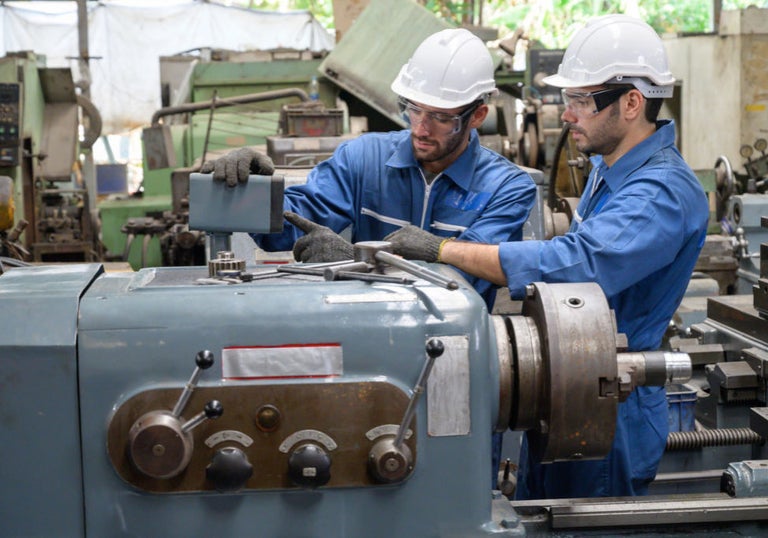Type A mechanical looseness
Type A is typically “caused by structural looseness/weakness of machine feet, baseplate or foundation; also by deteriorated grouting, loose hold-down bolts at the base; and distortion of the frame or base (i.e., soft foot)” (Technical Associates, Mechanical Looseness).
Type B mechanical looseness
Type B is generally caused by loose pillowblock bolts, cracks in frame structure or in bearing pedestal” (Technical Associates, Mechanical Looseness).
Sometimes, a machine may be experiencing both looseness and unbalance at the same time. We recommend checking for looseness before you check for unbalance since mechanical looseness can be simpler to diagnose and fix.
Looseness is a very common vibration analysis diagnosis. There are many components on a machine that may be experiencing looseness. If you suspect looseness may be a problem for your machine and/or if you have received a looseness diagnosis, you may want to examine these components of your machine:
- Loose bolting
- Coupling looseness or backlash
- Loose fasteners
- Soft foot
- Improper or deteriorated grout
This list is not exhaustive, but it is a good place to start when diagnosing looseness or prior to starting a balance job.
Let’s look at unbalance in more detail.
Unbalance is also a common vibration analysis diagnosis. It is the uneven distribution of mass around a rotating access. It can be caused by dirt, paint, or some other contaminant, rust or broken blades, or missing fasteners, to name a few causes.
There are three main types of unbalance:
1. Static unbalance
2. Couple unbalance
3. Dynamic unbalance
Each of these types will appear similarly in the spectrum. Pay close attention to phase angles between locations and axes to pinpoint which type of unbalance you are dealing with.
So how do these two issues appear on the vibration spectrum?
The spectrum for unbalance and looseness look very similar in certain axis of vibration. However, they differ in some key ways. Technical Associates describes the differences as follows:
The spectrum for Type A looseness: “Phase analysis may reveal approx. 180 degrees phase difference in vertical measurements on bolt, machine foot, baseplate or base itself. Time Waveform – Typically 1 Pulse per Rev” (Technical Associates, Mass Unbalance).
For Type B looseness: “Time Waveform – Typically 2 Pulses per Rev” (Technical Associates, Mass Unbalance).
The spectrum for unbalance: “Force unbalance will be in-phase and steady. Amplitude due to unbalance will increase by the square of speed below first rotor critical. 1X RPM [is] always present and normally dominates spectrum…Also, approx. 90 degrees phase difference between horizontal and & vertical readings usually occurs on each bearing of unbalanced rotor” (Technical Associates, Mass Unbalance).
Additionally, unbalance will generally show up in high vibration amplitudes at frequencies equal to 1X RPM. Amplitudes will typically be highest in the horizontal direction, especially on rigidly mounted machines.
For example:
- Static unbalance will appear on the spectrum as amplitude that is the same on both bearings. The phase angles will also be the same.
- Couple unbalance will appear on the spectrum as amplitude that is the same on both bearings as well. However, the phase angles will be 180 degrees different.
- With dynamic unbalance, both the vibration amplitude and the phase angles will be different.
So next time you are experiencing an issue with a machine, you will have some direction regarding how to identify it as either looseness or unbalance, as well as how to differentiate these two faults from one another.








